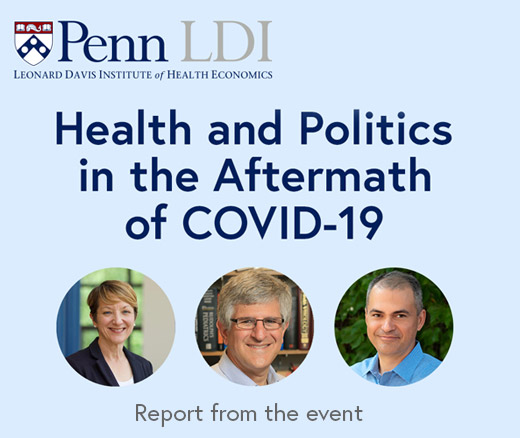
Contradictions That Confuse Federal Food Policies
Announcing Bold New Goals While Crippling the Infrastructure Needed to Achieve Them
Population Health
Blog Post
Liver disease in the U.S. is shifting dramatically. Some types of hepatitis are now curable but alcohol use and metabolic conditions such as high blood sugar or high blood pressure have become major disease contributors.
In 2023, an expert panel developed new terms for liver diseases, aiming to increase clinical accuracy and reduce stigma. An overarching category, steatotic liver disease (previously fatty liver disease), now covers three conditions. Two are metabolic dysfunction- and alcohol-associated liver diseases.
The third category is metabolic and alcohol-associated liver disease (MetALD). This new term describes disease that stems from metabolic conditions and alcohol use—meaning two factors are harming the liver, potentially making patients sicker than other groups. More than 17 million people in the U.S. may have MetALD.
LDI Senior Fellow Nadim Mahmud answered questions about the study which he completed with colleagues, including Senior Fellow Marina Serper, and first author Pedro Ochoa-Allemant, a Clinical Fellow in Gastroenterology and Hepatology at Penn Medicine. They developed an algorithm (computer process) to identify MetALD patients using data from the national transplant registry.
Mahmud: Alcohol use and metabolic conditions such as diabetes and obesity are the current main drivers of U.S. liver disease, replacing viral hepatitis, which we can now cure. MetALD has always existed, but naming it recognizes that many patients have liver damage from both alcohol and nonalcohol-related factors.
Mahmud: MetALD is a new category, so we don’t know how many people on the liver transplant waitlist have it or how their outcomes compare to other patients. This group might have specific needs or responses to particular treatments or management programs. We don’t know until we do the research.
MetALD is not yet a category in the United Network for Organ Sharing (UNOS) that runs the national transplant system, including the waitlist. We developed algorithms to identify MetALD patients in the UNOS database so we—and others—can start to study who does better or worse so we can ensure transplant success.
We tested our algorithms against a list of MetALD patients identified by a manual review of medical records from the University of Pennsylvania Health System’s large regional transplant center. Among patients with MetALD, our best algorithm successfully identified them about 73% of the time. This was acceptable for now, for use in research, including our study.
Mahmud: Using 2002-2022 UNOS data, we saw that MetALD and metabolic dysfunction-associated and alcohol-associated steatotic liver diseases increased nationally. MetALD showed a threefold increase as the reason for being waitlisted or for receiving a transplant.

Our results mirror national trends. New treatments mean fewer people need transplants for hepatitis, and the U.S. has seen increased obesity and a surge in alcohol use since the pandemic.
Of course, racial or other biases in the registry affect our results. Our high-level findings, though, suggested that patients with MetALD in the UNOS registry had relatively high deaths and transplant failures. They had high waitlist removal suggesting they’re sicker. This makes sense because we’d expect that having two things hurting the liver, metabolic disease and alcohol, would have worse outcomes.
Mahmud: With the algorithm, we can start learning about MetALD. We can ask how patients fare compared to people with liver cancer, hepatitis, or other disease. If transplant centers have different success rates, we can study what works to support patients. For example, Penn Medicine has a multidisciplinary post-transplant program that integrates behavioral care for alcohol use. We could study the impact of those programs.
We need better data, though. UNOS collects little to no data on patient alcohol use, a major driver of liver disease and transplant failure. The data are available, too. Transplant centers ask patients about alcohol use and do blood tests for it, but UNOS doesn’t require that centers send them that information, so there’s a disconnect between data we have and what’s available in the UNOS database for research to improve patient outcomes.
I’m mindful not to increase the work of transplant coordinators who gather and send data to UNOS, but without knowing patient alcohol use, we’re hamstrung in our ability to improve patient care. Having the data in UNOS would allow researchers to learn what prevention, treatment, and management strategies are best for patients with MetALD and other steatotic liver diseases.
The study, “Waitlisting and Liver Transplantation for MetALD in the United States: An Analysis of the UNOS National Registry,” was published in Hepatology on April 29, 2024. Authors include Pedro Ochoa-Allemant, Marina Serper, Roy X. Wang, Helen Tang, Bachir Ghandour, Sarem Khan, and Nadim Mahmud.


Announcing Bold New Goals While Crippling the Infrastructure Needed to Achieve Them

Promising New Evidence and What’s Next

From 1990 to 2019, Black Life Expectancy Rose Most in Major Metros and the Northeast—but Gains Stalled or Reversed in Rural Areas and the Midwest, Especially for Younger Adults

A Penn LDI Seminar Focuses on Why They’re Important for the Future

Former Philadelphia Health Commissioner Warns That Gutting the CDC, Undermining Vaccines, and Politicizing Science Will Leave the U.S. Dangerously Unprepared for the Next Pandemic

Rural Parents Had More Emergency Visits and Insurance Loss Than Urban Peers, an LDI Study Shows. Integrated Baby Visits Could Help All Parents Be Healthier